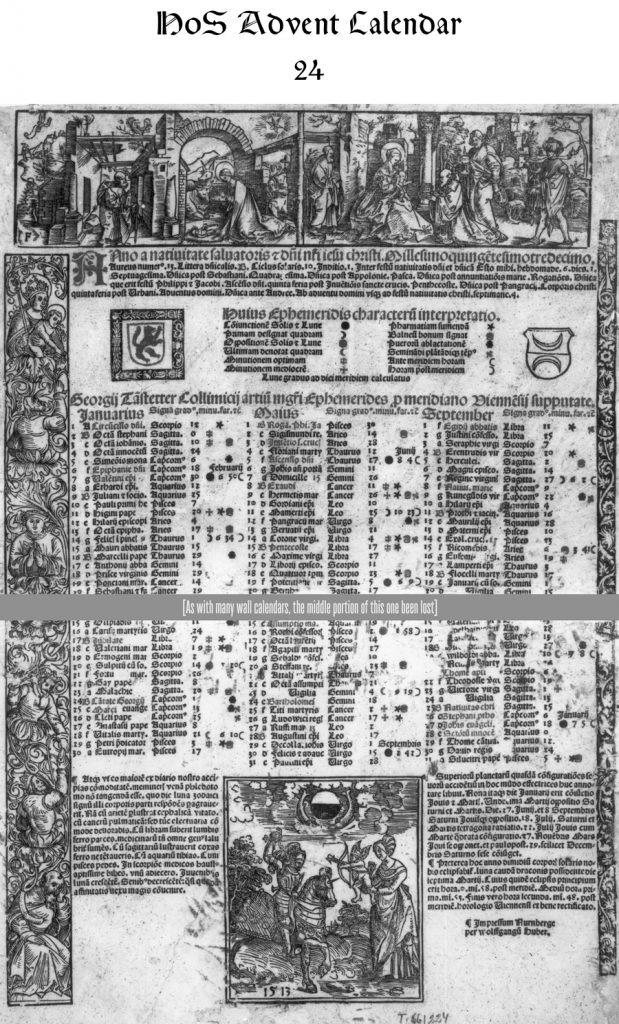
From about 1505 until the late 1520s Georg Tannstetter produced astrological wall calendars like this one, often in both Latin and German. Most of his calendars were calculated for Vienna, where he was a master at the university at first in the liberal arts faculty and later in the medical faculty. His name and reputation was also attached to a few calendars printed for more distant cities. These calendars offered a range of astrologically useful information, e.g., the place of the moon for every day of the year, phases of the moon (new, first quarter, full, last quarter), good and mediocre times to let blood, when to take medicines, to bathe, to wean children, and when to plant or sow seeds. A handy legend graced the top of most calendars, explaining the common system of symbols used to denote these various activities.

The calendars were always adorned with woodcuts across the top and down the sides. In some cases, such as Tannstetter’s wall calendar for 1517, the woodcuts were related to the heavens. On most calendars, however, these woodcuts seemed merely decoration and were almost certainly recycled by the printer. On this calendar for 1513, the woodcuts across the top show the Nativity (including the Star of Bethlehem) and the magi. A common exception to this practice was the woodcut at the bottom of the calendar that usually depicted the rulers of the year and any eclipse that might occur that year.

This woodcut not only conveyed relevant information about the coming year, so recycling them would be difficult, it also linked visually the calendar to the printed judicia or annual prognostication for that year.[1] Like other authors of calendars, Tannstetter also composed each year a new judicia in which he forecast what would likely happen in the coming year, including the likelihood of war, famine, or plague, the fortunes and setbacks for various people—e.g., farmers, university masters, clergy, merchants, aristocrats—kingdoms, and rulers. He also offered weather predictions for the coming year, sometimes up to three days on either side of each quarter moon. As with the wall calendars, these annual prognostications were often published in both Latin and German. The title-page woodcut on these judicia were often the same one found at the bottom of the calendar.

Both the wall calendars and the annual prognostications were hugely popular in the early 16th century. Unfortunately, ephemeral printings were not valued enough to be saved in large numbers. In the case of wall calendars, their large format made them difficult to save, so even fewer survive.
-
Sometimes the woodcut at the bottom of the calendar was the generic zodiacal man. ↩
